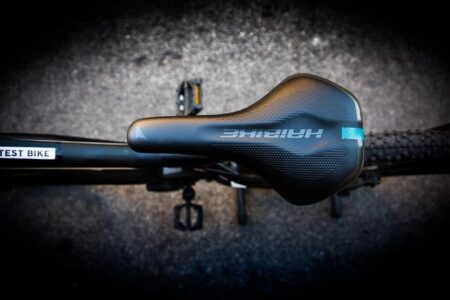In a gripping display of strategy and endurance, Sofia Gomez Villafañe clinched a remarkable third-place finish at the Unbound 200, employing a tactical approach that emphasized efficiency over sheer power. As the grueling race unfolded, Villafañe demonstrated her prowess by carefully managing her energy output in the second half, adhering to her mantra of reaching the finish line with the least amount of watts. Her performance not only highlighted her exceptional cycling skills but also underscored the importance of race tactics in one of the toughest gravel races in the United States. This article delves into Gomez Villafañe’s strategic mindset and how it propelled her to a podium finish amidst fierce competition.
Tactical Mastery in Unbound 200: Sofia Gomez Villafañe’s Strategic Surge
Sofia Gomez Villafañe’s performance at the Unbound 200 was marked by a masterclass in race strategy, showcasing her exceptional tactical acumen. In a race known for its grueling endurance demands, Sofia adopted a calculated approach focused on conserving energy in the early stages. By keeping a steady pace and strategically utilizing her rivals, she was able to save crucial watts for the second half of the race when the terrain grew more challenging. This foresight not only allowed her to maintain a competitive edge but also to execute a decisive surge that secured her third place in a fiercely contested field.
Key elements of her strategy included:
- Energy Conservation: Prioritizing efficiency and minimizing effort during the initial phases of the race.
- Assessment of Rivals: Observing competitors’ strengths and weaknesses to exploit opportunities for advancement.
- Timely Attacks: Launching strong efforts in crucial sections, particularly when rivals showed signs of fatigue.
This blend of patience and aggression not only highlights Gomez Villafañe’s racing intellect but also sets a precedent for future endurance athletes, illustrating the importance of strategic planning in high-stakes environments.
Maximizing Efficiency: The Art of Finishing Strong with Minimal Watts
The Unbound 200 showcased a masterclass in endurance cycling as Sofia Gomez Villafañe employed a strategic approach to claim third place. Her second-half tactics were pivotal, allowing her to conserve energy while others faltered under the physical demands of the grueling race. As the kilometers dwindled, her ability to finish strong with minimal watts was highlighted by key decisions at critical moments on the course. By managing her efforts wisely throughout the race, she could leverage slipping competitors while maintaining her own pace, demonstrating that racing smart often outweighs sheer power output.
Villafañe’s strategy relied on several key principles that can serve as a blueprint for cyclists aiming for optimal performance:
- Energy Conservation: Prioritizing pacing in the early stages to avoid fatigue.
- Situational Awareness: Monitoring competitors and adjusting tactics accordingly.
- Optimal Gear Selection: Using appropriate gear during varying terrain to minimize exertion.
- Hydration and Nutrition: Ensuring the right intake to sustain energy levels over the distance.
In the final stretches, Villafañe not only showcased her physical prowess but also emphasized the mental aspect of long-distance racing. Decisions made in the heat of competition can drastically affect the outcome, particularly when fatigue sets in. Her ability to remain focused and composed as she navigated the final kilometers showcases the intersection of strategy and physicality, a blend that is essential for any athlete hoping to dominate in endurance events.
Lessons in Endurance Racing: Insights from Gomez Villafañe’s Performance
Sofia Gomez Villafañe’s remarkable performance at the Unbound 200 showcased the essential strategies for success in endurance racing. By adopting a calculated approach, she exemplified the principle of “getting to the finish line with the least amount of watts.” This mindset not only emphasizes power management but also stresses the significance of pacing and decision-making during critical moments of the race. As competitors often shoot for high-intensity racing right from the start, Gomez Villafañe’s strategy focused on maintaining sustainability, enabling her to recover and strategically re-engage during the latter half of the event when others began to falter.
Key lessons from her race include:
- Pacing strategy: Start conservatively to conserve energy for later stages.
- Adaptability: Be prepared to adjust tactics in response to race dynamics and competitors’ actions.
- Nutrition and hydration: Prioritize fueling strategies to enhance stamina over long distances.
- Mental resilience: Stay focused and composed, particularly when facing fatigue and challenging conditions.
This event illustrated how strategic thinking and endurance can lead to a strong finish even amidst high competition. Gomez Villafañe’s ability to execute these tactics delivered a memorable third-place finish and solidified her position in the world of endurance racing.
Wrapping Up
In conclusion, Sofia Gomez Villafañe’s strategic performance at the Unbound 200 exemplifies the adage that sometimes less is more in the world of competitive cycling. By conserving energy and deploying her tactical acumen in the second half of the race, she not only salvaged a commendable third place but also underscored the importance of endurance and pacing in ultra-endurance events. As the cycling community reflects on her remarkable finish, Villafañe’s approach serves as a valuable lesson for racers and enthusiasts alike. Moving forward, her experience at Unbound may well influence training regimes and race strategies for climbers aiming to optimize their performance over long distances. With this event now behind her, all eyes will be on Villafañe as she gears up for her next challenge, ready to push the boundaries of what is possible in the demanding world of gravel racing.











